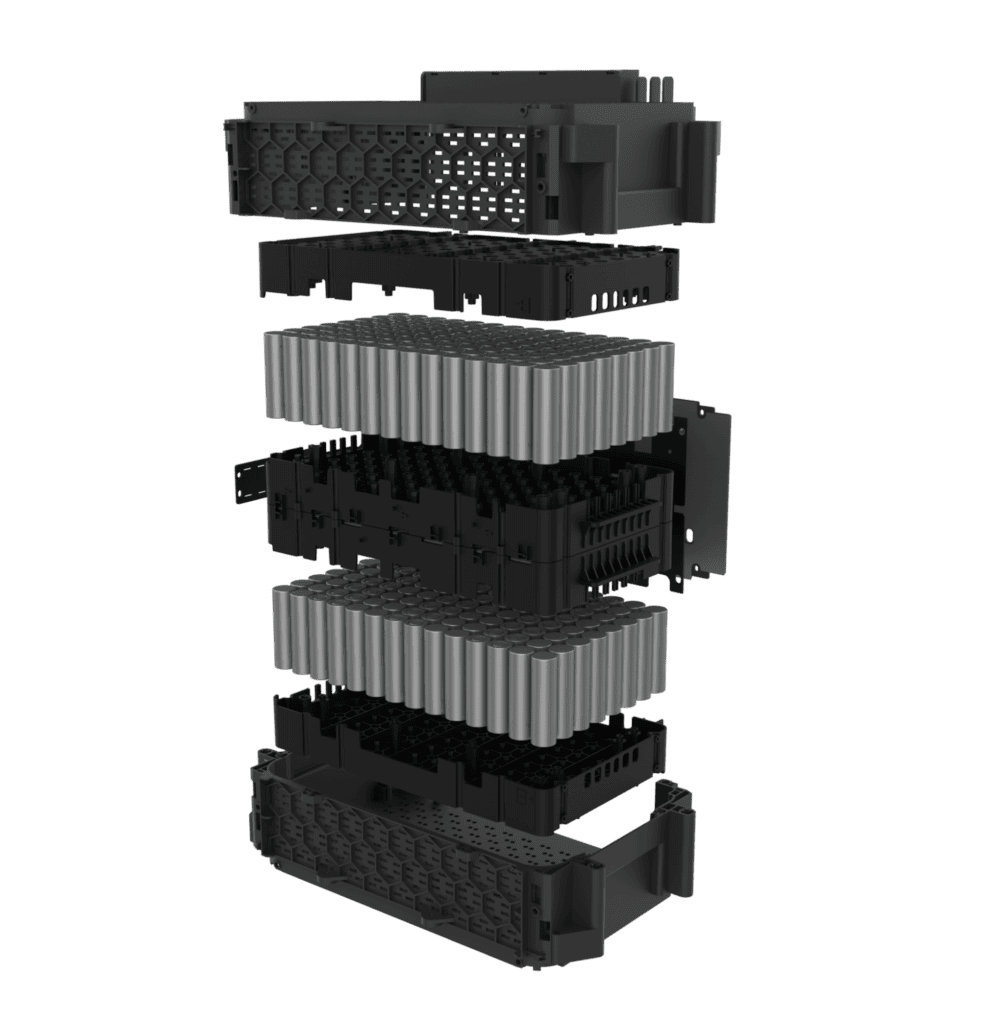Table of Contents
If you’re shopping for a new smartphone, tablet, or laptop, understanding amp hours (Ah) and milli-amp hours is essential for making an informed purchase decision.
Few things are more frustrating than buying a new personal electronic device only to have it conk out after a few hours of use.
Understanding battery amp-hours just might keep you from hurling that expensive new tablet against the wall in anger.
Learn more about battery amp-hours (Ah), milliampere-hours (mAh), and what they mean for battery performance below.
What Is an Amp?
An amp, short for ampere, is a fundamental unit of electric current in the International System of Units (SI).
Named after the French physicist André-Marie Ampère, an amp is one of the fundamental units for measuring electricity.
(Source: Energy Education)
Amps measure the flow of electric charge as it travels through a conductor — like the metal wiring found in your phone charger or the wall plug for any household appliance.
If you want to get technical, “one ampere is a flow of one coulomb of charge through a point or area in one second.”
Understanding amps requires a basic grasp of the concept of electric current.
Compare electrical current to the way we measure the flow of water through a pipe in a plumbing system.
Volts (V) are equivalent to water pressure, and ohms (Ω) measure resistance (i.e., pipe size).
Amperes (amps) represent the flow of electricity in much the same way as the flow rate of water through a pipe is measured in gallons or litres per minute.
One ampere is the amount of current that flows when one volt of electrical pressure is applied against one ohm of resistance.
The relationship between amperage, voltage, and resistance is best understood through Ohm’s Law, which states that current (I) equals voltage (V) divided by resistance (R), or, mathematically, I = V/R.
Thus, if a device applies a potential of one volt across a resistance of one ohm, the resulting current would be one ampere.
On a practical level, the concept of amps, ohms, and volts relates to the electricity demands of everyday devices.
For instance, a standard LED light bulb might draw about 0.02 amps, while a large appliance like a refrigerator may require between 3 to 15A.
A basic comprehension of how amperage relates to operating devices and appliances is also helpful if you’re assessing the suitability of a renewable energy system, such as a home backup generator.

Amp Hours: The Meaning of Ah in Batteries
Understanding what amp-hours (Ah) and milli-amp hours mean for batteries is essential for accurately assessing the performance of consumer electronic devices like smartphones, tablets, and laptops.
Unlike high-wattage battery-operated devices like portable power stations, which typically measure storage capacity in watt-hours (Wh) and kilowatt-hours (kWh), less demanding devices measure storage in amp hours (Ah) and milli-amp hours (mAh).
The storage capacity of your devices indicates how long you can run them between charges.
Think of a battery rated at 1Ah. It can supply 1 ampere of current for one hour to your device before depletion. Alternatively, it could deliver 0.5 amperes for two hours or 2 amperes for half an hour.
The capacity is constant, but the distribution of current and time can vary.
Measuring battery storage capacity is essential for numerous applications, not least of which is evaluating off-grid power solutions.
As is common with off-grid electricity storage systems, the compact and lightweight RIVER Series from EcoFlow measures battery capacity in Wh and kWh, but it’s easy enough to convert that to amp-hours.
Both offer accurate estimates of how long a battery will last between charges. Watts are commonly used for high-capacity batteries rather than amps.
It’s easier for consumers to understand, particularly as that’s also how electricity providers and power companies bill people for energy consumption.
Using kilowatt hours makes even more sense for EcoFlow’s DELTA Series.
Solutions like EcoFlow DELTA Pro Ultra can store enough electricity to run the average home for up to a month off-grid — or indefinitely if you keep charged up with solar panels.
With a solar input capacity of 16.8 kilowatts using 3 x EcoFlow DELTA Pro Ultra Inverters, you can add up to 42 x EcoFlow 400W rigid solar panels.
Understanding storage capacity and other critical concepts like depth of discharge, cycle life, and the importance of battery chemistry is essential to selecting the right off-grid or hybrid electricity solution for your needs.
Calculating a Battery’s Amp-Hour Rating
Understanding amp-hour (Ah) and milliamp-hour (mAh) calculations — or converting them to watt-hours and kilowatt-hours — is crucial for gauging how long a battery will run between charges.
Depending on the type of device and manufacturer, battery storage capacity is rated in mAh/Ah or Wh/kWh.
Each spec can tell you how long your battery-powered device will operate before you need to recharge.
Formula for Calculating Amp-hours
Ah is calculated by multiplying current flow in amps by time in hours.
For example:
5A x 10 hour = 50Ah
Common Ah Ratings
Here are the amp-hour ratings for a selection of popular consumer electronics, courtesy of TechTarget.
- Dell XPS 15 laptop battery: 6,254 mAh
- Apple iPhone Pro 14 battery: 3,200 mAh
- Samsung Galaxy Tab S8 tablet battery: 11,200 mAh
- DeWalt PowerStack 20V Max power tool battery: 5,000 mAh
- Panasonic Eneloop AAA rechargeable battery: 800 mAh
- Tenergy 9V lithium battery: 1,200 mAh
As you can see, amp-hour ratings vary widely depending on the type of device and application.
Note that the rating of all the devices above is measured in mAh, not Ah. This is simply because people are more familiar with mAh as a product spec.
The storage capacity of the DELL Laptop, for example, could be expressed as 6.254 Ah. The value is exactly the same as 6,254mAh.
Convert mAh to Ah Formula
Divide the electric charge value by 1000: (6,254 mAh / 1000 = 6.254 Ah)
As mentioned above, more power-hungry battery-operated devices typically spec out storage capacity in Wh/kWh — not Ah/mAh.
Understanding how to convert amp-hours to watt-hours can be valuable when assessing the storage capacity of power banks like the EcoFlow RIVER 2.
EcoFlow RIVER portable power stations are designed to be compact and lightweight.
Of course, the smaller they get, the lower the AC output and storage capacity.
EcoFlow RIVER 2 can easily fit in your backpack, and it’s so light you can take it hiking.
But how long will it last before you need to recharge it?
The LiFePO4 battery in EcoFlow RIVER 2 is rated for 256wH of storage.
What’s that in amp-hours?
Convert Watt-Hours (Wh) to Amp-Hours (Ah) Formula
To convert watt-hours to amp-hours, you also need the device voltage. Virtually all consumer appliances in the UK operate on 230V standard voltage. One exception is RV and motorhome appliances, which often use a 12V system.
Regardless, the formula to convert watt-hours to amp-hours using voltage is as follows:
Amp-hours = Watt-hours / Voltage
The battery capacity of EcoFlow RIVER 2 in amp-hours is as follows:
768Wh / 230V = 3.3Ah (3300mAh)
Frequently Asked Questions
The ideal amp-hour (Ah) rating for a battery depends on the device’s electricity consumption. For small electronics like smartphones or digital cameras, 1 – 3.5Ah is standard. For higher-wattage devices like tablets and laptops, 6aH – 15ah is common. Appliances that consume more electricity usually measure storage in watt-hours (Wh) and kilowatt-hours (kWh), not Ah or milli-amp hours (mAh).
A higher Ah battery isn’t necessarily better, but it does have greater storage capacity. All things being equal, a 7Ah battery will run a device that requires 30 watts for longer than a 6Ah battery. A 7Ah lithium-ion battery is also likely to be heavier and bulkier than a 6Ah Li-ion battery, trading off capacity for portability.
A 4-amp-hour (4,000mAh) battery offers twice the electrical storage capacity of a 2-amp-hour (2,000mAh) battery. With lithium-ion batteries of similar manufacture, a 4,000mAh battery will also be significantly heavier and less compact. Bigger isn’t necessarily better. It depends on the electricity demands of the device you want to operate.
Final Thoughts
When shopping for battery-powered consumer electronic devices, understanding amp-hours (Ah) and milli-amp hours is essential.
Battery storage capacity for smartphones, laptops, tablets, digital cameras, and similar products is typically given in milli-amp hours (mAh).
The electricity consumption of the device and the battery’s storage capacity determine how long it will run without recharging.
Storage capacity for larger batteries, like the ones used in EcoFlow portable power stations, is measured in watt-hours (wH) or kilowatt hours (kWh).
If you’re more comfortable thinking about battery storage in Ah or mAh, converting amp-hours to watt-hours is easy if you know the voltage.
No matter how you measure capacity, EcoFlow’s high-performance LiFePO4 batteries can power your next camping trip — or your entire house — no matter how you measure capacity.
Check out EcoFlow’s off-grid solar and hybrid whole-home backup power solutions today.







